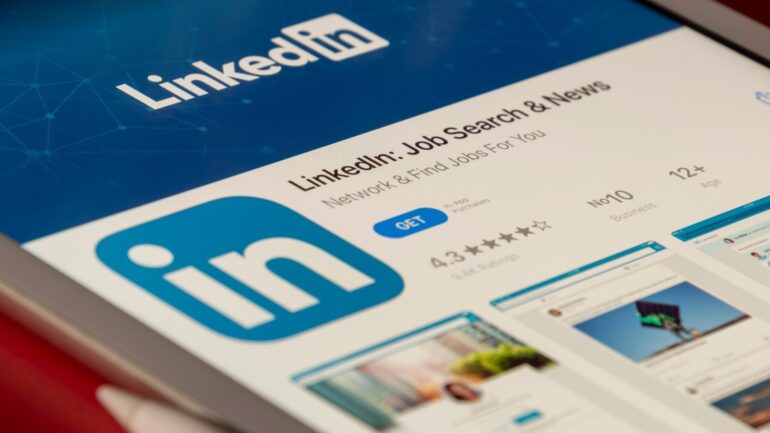TL;DR:
- LinkedIn introduces AI tools for talent acquisition.
- Likelihood of Interest tool identifies engaged candidates.
- AI-Assisted Messages crafts personalized InMail messages.
- Personalization boosts recruiting success, AI aids efficiency.
- AI tools require vigilance against biases and compliance.
- Accessibility crucial, especially for candidates with disabilities.
Main AI News:
In a stride towards revolutionizing the world of talent acquisition, LinkedIn has recently introduced two cutting-edge AI-powered tools tailored to expedite the process of identifying and connecting with potential job candidates. These innovative solutions have been strategically designed to empower recruitment professionals with a more streamlined and efficient approach to their tasks, as announced by the company.
The first tool, known as the Likelihood of Interest, is an AI-driven marvel integrated into LinkedIn Recruiter. It operates by meticulously sifting through the vast talent pool to identify candidates who exhibit a higher propensity to engage in meaningful conversations regarding open job positions. This strategic identification process promises to enhance the effectiveness of interactions between recruiters and potential candidates, optimizing the entire recruitment lifecycle.
Complementing the Likelihood of Interest tool is the AI-Assisted Messages feature, a testament to the prowess of generative AI in crafting personalized InMail messages addressed to potential candidates. By harnessing the power of generative AI, recruiters can now compose bespoke messages that resonate with candidates on a deeper level, a feat that was once a time-consuming endeavor. This tool ingeniously merges information extracted from a candidate’s profile with relevant company details, thereby sculpting a message that reflects both the candidate’s qualifications and the job role in question.
In a realm where time is of the essence, these AI-powered innovations stand as beacons of efficiency. “As we embrace the era of generative AI in recruiting, the seeds of anticipation sown by 74% of hiring professionals are now blossoming into reality,” penned Bruce Anderson, a seasoned content marketer and editor, in a recent article on LinkedIn’s esteemed Talent Blog.
Personalization, Anderson affirms, is the driving force behind successful recruiting on the platform. The meticulous effort invested in crafting personalized InMail messages has yielded remarkable results, with recruiters reporting a staggering 40% increase in acceptance rates from potential candidates. LinkedIn’s AI-Assisted Messages propels this pursuit of personalization to new heights, with the ability to amalgamate candidate-specific details with nuanced company information, all while preserving the recruiter’s touch.
The second offering, the Likelihood of Interest tool, resonates with the discerning mindset of modern recruitment. This tool’s adept AI engine swiftly detects candidates exhibiting a marked interest in available positions. This invaluable insight is seamlessly integrated into the candidate’s profile card on the Recruiter platform, affording recruiters an immediate understanding of a candidate’s engagement level. By drawing insights from diverse sources, including Open to Work status, InMail acceptance trends, and affinity towards specific companies, the tool aids recruiters in pinpointing the most promising candidates.
In the words of Anderson, “Once the candidates are singled out, the avenue to personalized communication opens wide.” The expedited process of sending precisely tailored messages grants recruiters the liberty to allocate their valuable time toward forging substantial relationships with potential candidates. This shift in focus from mundane tasks to fostering profound connections holds the potential to reshape the recruitment landscape.
The allure of generative AI tools is indisputable, as evidenced by their surging popularity among HR professionals this year. The likes of Microsoft, IBM, and Google Cloud have made resonating strides in this domain, introducing tools that streamline HR-related responsibilities ranging from crafting job postings to managing employee inquiries. However, it remains unequivocally evident that personalization is the cornerstone of effective recruitment, a fact that these innovative tools seamlessly uphold.
As organizations embrace the paradigm shift introduced by AI, it’s imperative to exercise vigilance in guarding against potential biases within these tools. With an eye on compliance and ethics, HR teams must proactively audit AI-powered decision-making processes and workforce management tools. The evolving landscape of HR laws and regulations governing AI usage necessitates HR professionals’ unwavering attention and adherence.
Furthermore, the implications of AI tools extend beyond the confines of organizational processes. Employers bear the responsibility of ensuring that these tools remain accessible to all individuals, including those with visual disabilities. By law, companies are bound to provide reasonable accommodations for decision-making tools fortified by algorithms or AI, particularly in the context of hiring practices.
Conclusion:
In a rapidly evolving market, LinkedIn’s pioneering AI-driven tools represent a transformative shift in the field of talent acquisition. The introduction of the Likelihood of Interest tool and AI-Assisted Messages heralds a new era of efficiency and personalization in recruitment processes. As AI tools gain prominence, businesses must remain vigilant against biases and ensure compliance with evolving regulations. Moreover, ensuring accessibility for all candidates, including those with disabilities, aligns with the ethical responsibility that accompanies such innovations. This technological advancement not only streamlines recruitment but also underscores the profound impact AI can have on reshaping human resources practices and fostering stronger connections between recruiters and potential candidates.

